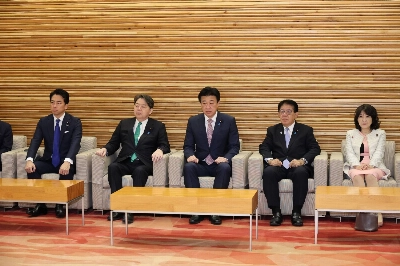The government reorganization that took effect last Saturday is designed to create an administrative system more responsive to the needs of the times, with politicians, not bureaucrats, taking the initiative in shaping public policy. In the most drastic bureaucratic reform in half a century, the number of ministries and key agencies has been cut almost in half, from 22 to 12. At the same time, the Prime Minister's Office has been restructured into the more powerful Cabinet Office.
Perhaps the most important feature of the shakeup is the strengthening of Cabinet functions. This means that national policies are framed by politicians, particularly the prime minister and Cabinet members. Elite bureaucrats who in the past effectively made policy will play only supporting roles. The name of the game is "political leadership," the key to building a more effective administrative system that is "simplified, efficient and transparent," as the Commission on Administrative Reform puts it in its final report.
The challenges confronting the government are daunting. The relentless tide of globalization, the graying of society and the information-technology revolution, to name just a few, all demand that the right decisions be made promptly according to an integrated national strategy. Obviously, the Cabinet must play the controlling role, with the prime minister setting the pace and direction for basic policy with the help of the Cabinet Secretariat and the Cabinet Office.
















With your current subscription plan you can comment on stories. However, before writing your first comment, please create a display name in the Profile section of your subscriber account page.